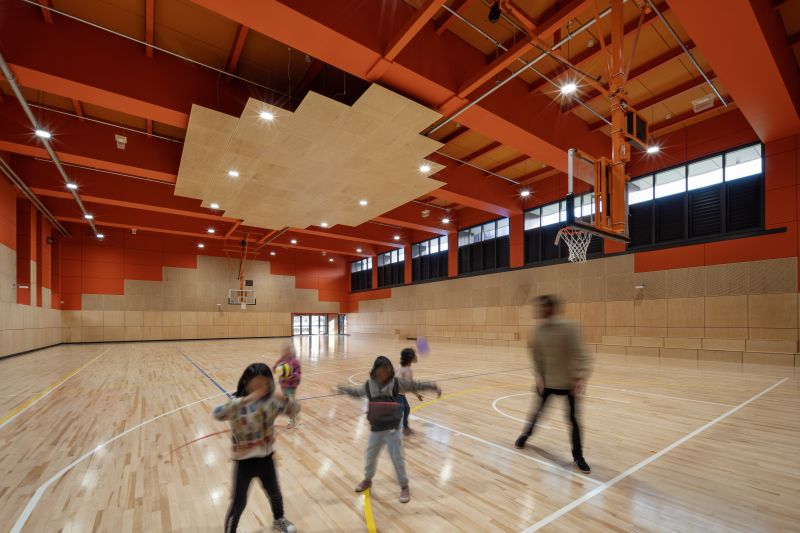
Image supplied by Autex
However, sports halls often present a significant challenge: managing excessive noise levels that can interfere with clear communication and instruction.
According to School Sport New Zealand, secondary school sport participation had a two percent increase from 47 percent in 2022 to 49 percent in 2023. An estimated total of 144,862 students represented their school in at least one sport in 2023.
Read the latest print edition of School News online HERE.
Indoor codes such as netball, basketball and volleyball were the most popular, with badminton and futsal also seeing a significant increase in participation over the past two years.
With almost 50 percent of New Zealand secondary school students playing at least one sport, and the increasing popularity of indoor sporting codes, it is imperative that your school sports hall is well-maintained and acoustically sound. This is particularly important if the space is also used for exams, assemblies and school concerts.
PE lessons can see sports halls filled with ākonga from various school classes. Teachers need to be able to effectively communicate with their students in these spaces.
Additionally, sports halls often serve as meeting points for cohorts, the whole school, or community gatherings. Proper acoustics are vital for everyone to enjoy these spaces.
Ben Hutter, National Sales Manager at Autex, said that because of their multi-function usage, sports halls create very different acoustic challenges to almost all other spaces in schools. “The sounds created here can be trickier to deal with as they vary from kids shouting, to ball strikes, and the screeching of shoes.”
Managing this symphony of sounds that accompany sport is crucial to maintaining a comfortable environment for spectators and players. Key considerations such as sound absorption, reflection, and diffusion are vital in reducing unwanted noise levels.
Sound absorption involves the use of materials that capture and dampen sound waves, minimising their reflection back into the space. Reflection management ensures that sound waves are directed in ways that avoid overwhelming the hall, while diffusion scatters sound waves to create a more balanced acoustic environment. By strategically combining these elements, sports halls can significantly reduce excessive noise, ensuring that both participants and spectators enjoy a more pleasant auditory experience.
“We recommend using thicker acoustic panels to cover as much of the ceiling as possible. These same panels can also be used on available wall space,” Mr Hutter said. “The benefit of a thicker panel is that it absorbs a wider range of frequencies.”
Acoustic panels, designed to absorb and control sound, can be made from timber or polyester blends and come in several aesthetically pleasing designs. Additionally, ceiling solutions are emerging as key contributors to noise reduction. Ceiling tiles or panels absorb or diffuse sound waves and are particularly important in spaces with high ceilings, as often seen in sports halls.
When constructing new sports halls, architects and designers can prioritise acoustics in their plans. By integrating sound management solutions from the ground up, you can ensure that these facilities are optimised for acoustic performance. This involves careful consideration of the building’s shape, materials, and layout to minimise sound reflection and maximise absorption.
In building optimal acoustic environments, though, school’s should remember the main function of a sports hall — fun, excitement and learning in a safe environment. Mr Hutter said: “While environments like this can be noisy and busy, the focus should be to ensure that all occupant’s wellbeing is the priority when designing the space.”
This article originally appeared in the Term 4 edition of School News. Read it online HERE.
The much-delayed English draft curriculum is now out for consultation, generating discussion from teachers.
Research from AUT demonstrates arts, culture and recreation have positive impacts on all aspects of…
How effective has the school phone ban been in achieving its aims? Researchers from the…
School camps and excursions deliver hands on learning experiences, helping to consolidate classroom learning.
Innovations in AV technologies present new opportunities to engage with students. We look at how…
A new report from the University of Auckland’s Our Voices Project asks young people what…
This website uses cookies.